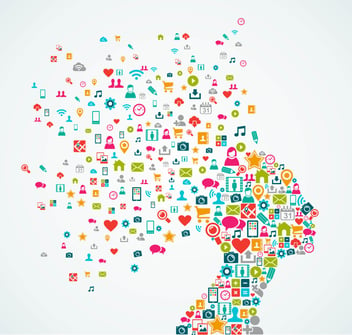Why the Gap Between Consumer Expectations and Brand Delivery is Growing
It’s a tough world out there for brands. Consumers can be really mean to brands, sometimes even abandoning them outright!
Not that anyone is shedding a tear or weeping about brand loyalty over beers in a dark tavern.
Truth is, we’re all complicit in the current state of brands across the world, according to recent research.
The 2015 Brand Keys Customer Loyalty Index was released last month, and it revealed a continuing trend: there’s a massive, widening gap between what consumers expect, and what brands are actually delivering.
As they do annually, Brand Keys surveyed consumers about 540 brands across 64 categories. The 2015 edition revealed that consumers’ emotional expectation levels rose by an average of nearly 28% compared to 2014's levels, the highest levels recorded in the 19 year history of the survey.
Conversely, consumers said that brands’ ability to meet their expectations rose by just 7% on average during the year (expectations defined as how consumers define their “ideal” within a particular category).
Getting in Touch with Consumer Expectations
There are brands that people love consistently, year in and out. Apple, Walmart, Nike, Victoria’s Secret, Amazon.com, among others, all seem to deliver exactly what their customers want, no less, but often more.
A big part of that success equation is simply being aware of what customers want in the first place. If there’s an area where most brands fail, it’s being open and flexible enough to respond to customer needs. Every brand, category, and customer is different, so it’s important to constantly engage and respond.
Another commonality among many of the top brands: loyalty programs, or similar structures to identify and reward top customers. Google (the company whose name is interchangeable with the word “search” itself) is tied atop the search category with Bing – which sees continuing growth in their Bing Rewards program and market share.
It Doesn’t Have to be so Difficult

Consumer expectations aren’t going to change any time soon. People are deal hungry and they have a boatload of options (Brand Keys mentions there were 36 new brands mentioned without prompting in this year’s index). If one brand doesn’t suit their needs, they’ll move on to the next.
A naysayer would claim that brand loyalty is dead, but that isn’t quite the truth. Brand loyalty has evolved, and most brands simply aren’t keeping up.
People are willing to be loyal, even fanatical about brands, as evidenced by research such as the CLI.
The brands that earn that type of love are those that listen, adapt, add value, and engage. It’s not a difficult process, it just requires being open to change.
(If it helps, the newest generation of buyers are quite eager to partner with brands.)
Once organizations are in the business of serving customers instead of the business itself, the gap between customer expectations and delivery will change. Until then, customers will just continue to be bullies.
Topics: consumer trends
Written by: Brandon Carter





.jpeg)







Share your Comment.